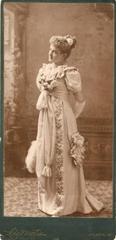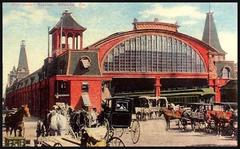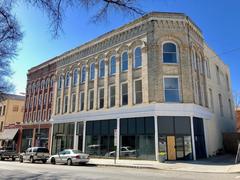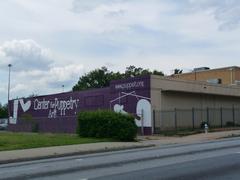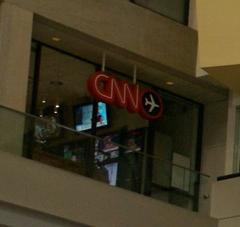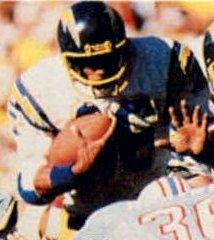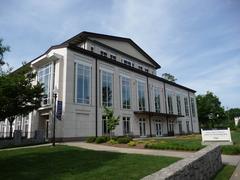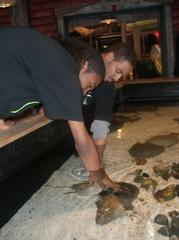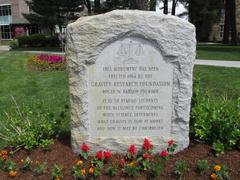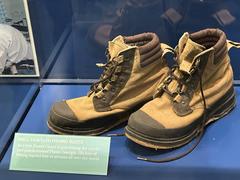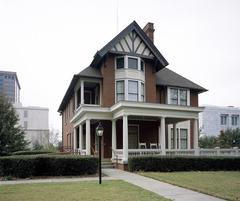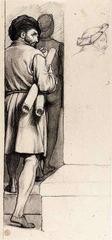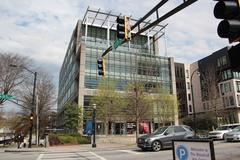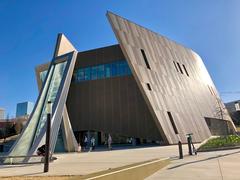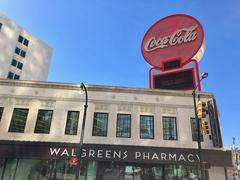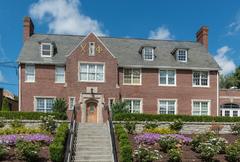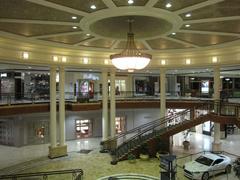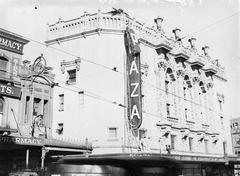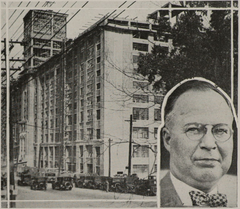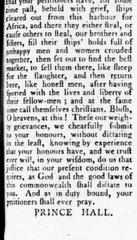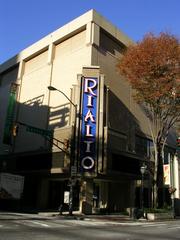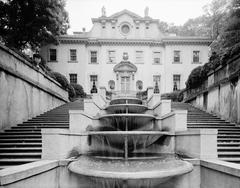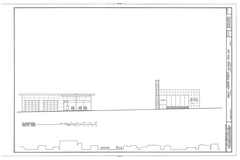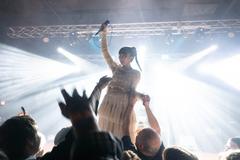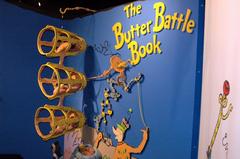
Atlanta-Fulton County Stadium: Visiting Hours, Tickets, and Historical Significance
Date: 03/07/2025
Introduction
Atlanta-Fulton County Stadium stands as a foundational chapter in Atlanta’s sports and urban history. Although demolished in 1997, its legacy remains deeply woven into the city’s cultural fabric. As the original home of the Atlanta Braves and the Atlanta Falcons, and the site of historic moments such as Hank Aaron’s 715th home run, the stadium was instrumental in establishing Atlanta as a premier sports city in the Deep South. Today, commemorative markers and site features allow visitors to connect with this pivotal era in Atlanta’s development.
This guide offers a detailed look at the stadium’s history, its architectural and civic significance, practical visitor information, and recommendations for exploring related attractions in Atlanta. Whether you are passionate about baseball, urban history, or civil rights, use this resource to plan a meaningful visit and deepen your understanding of Atlanta’s evolution.
(New Georgia Encyclopedia, The Clio, Echoes of the Past)
Table of Contents
- Stadium Origins and Construction
- Architectural Features and Capacity
- Role in Atlanta’s Sports and Civic Identity
- Memorable Moments and Cultural Legacy
- Challenges, Decline, and Demolition
- Urban Transformation and Community Impact
- Visiting the Stadium Site: Hours, Tickets, and What Remains
- Nearby Attractions and Complementary Experiences
- Practical Visitor Tips and Accessibility
- Frequently Asked Questions (FAQ)
- Conclusion and Further Resources
Stadium Origins and Construction
Conceived during Atlanta’s surge of urban ambition in the 1960s, Atlanta-Fulton County Stadium was built to attract major sports franchises and elevate the city’s profile. The relocation of the Milwaukee Braves to Atlanta in 1966 was contingent on the completion of a modern stadium, and city leaders quickly mobilized resources to realize this vision (New Georgia Encyclopedia). Construction began in April 1964 on previously underutilized land south of downtown, transforming the area into a sprawling sports complex at a cost of $18 million (Ballparks.com).
The stadium officially opened in 1965, initially hosting the minor league Atlanta Crackers, and welcomed the Braves for their first home game in April 1966 (This Great Game).
Architectural Features and Capacity
Atlanta-Fulton County Stadium was a multi-purpose, open-air facility with a natural grass surface, distinguishing it from many contemporaries that used artificial turf. It originally seated 51,500 spectators, later expanding to 52,013 (Ballparks.com). The stadium’s central location at 521 Capitol Avenue SE made it accessible via major interstates and public transportation, and it boasted ample parking and periodically updated amenities (This Great Game).
Role in Atlanta’s Sports and Civic Identity
The stadium symbolized Atlanta’s emergence as a major-league city and “Hub of the New South.” It hosted:
- Atlanta Braves (MLB): 1966–1996
- Atlanta Falcons (NFL): 1966–1991
- Atlanta Chiefs (NASL): 1967–69, 1971–72, 1979–81
- Peach Bowl (College Football): 1971–1992
The arrival of the Braves marked the first major-league baseball presence in the Deep South, reshaping regional and national perceptions of Atlanta (Wikipedia).
Memorable Moments and Cultural Legacy
Among the stadium’s historic moments, Hank Aaron’s 715th home run on April 8, 1974 stands out as a milestone in both sports and civil rights history (New Georgia Encyclopedia). The stadium’s high elevation and summer heat earned it the nickname “The Launching Pad,” favoring home run hitters (Wikipedia).
Other highlights include the Braves’ 1995 World Series championship, the Falcons’ early NFL seasons, and numerous concerts and civic events that made the venue a community hub (Echoes of the Past).
Challenges, Decline, and Demolition
By the 1990s, aging infrastructure and changing fan expectations prompted the Braves and city officials to seek a new, modern venue. The final Braves game at the stadium was played in October 1996, and the stadium was demolished in August 1997 to make way for Turner Field, which itself was converted from the Centennial Olympic Stadium (Wikipedia). The stadium’s demolition marked the end of an era but also reflected the city’s ongoing evolution (Echoes of the Past).
Urban Transformation and Community Impact
Urban Renewal and Displacement
The stadium’s construction was part of a wider urban renewal effort that led to the displacement of the Washington-Rawson neighborhood, a predominantly Black and working-class area. This process, common in mid-20th-century American cities, was both a symbol of civic ambition and a source of controversy and hardship for affected residents (Georgia Exhibits).
Economic Ambitions and Realities
While the stadium was intended as an economic catalyst, the results were mixed. It brought professional sports and conventions but did not fully integrate with or revitalize the surrounding neighborhoods as hoped (GSU History of Our Streets).
Civic Identity and Lasting Impact
Despite controversies, the stadium reinforced Atlanta’s identity as a major sports and events city, laying the foundation for its continued status as a top destination for national and international sporting events (Discover Atlanta). The story of Atlanta-Fulton County Stadium is inseparable from the city’s broader struggles and achievements in urban planning, civil rights, and community identity.
Visiting the Stadium Site: Hours, Tickets, and What Remains
Location and Access
The former stadium site is located at 755 Hank Aaron Drive SE, in Atlanta’s Summerhill neighborhood. The Georgia State University Green Lot occupies much of the old stadium footprint, and the area is accessible by car (with parking available) and by MARTA public transportation (The Clio).
Visiting Hours and Ticket Information
- Open: Year-round, primarily during daylight hours for safety.
- Admission: Free; no tickets required.
What Remains on Site
Visitors can explore:
- Painted Field Outline: The original baseball diamond is marked on the Green Lot pavement, allowing visitors to trace the bases and stand at home plate (The Clio).
- Hank Aaron 715th Home Run Monument: A preserved section of the outfield wall and commemorative plaque mark the spot where Aaron’s record-breaking home run landed (The Clio).
Accessibility
The site is flat, paved, and accessible for visitors with mobility challenges. Interpretive signage provides historical context.
Safety
As the site is part of an active parking lot, visitors should remain vigilant of vehicle traffic and avoid visiting during major stadium events unless attending those events.
Nearby Attractions and Complementary Experiences
- Center Parc Stadium: Formerly Turner Field, now GSU’s football stadium, occasionally offers tours (Urbanize Atlanta).
- Summerhill Neighborhood: Features revitalized restaurants, shops, and local businesses.
- Centennial Olympic Park: Downtown public park and hub for festivals and concerts.
- Georgia Aquarium and World of Coca-Cola: Major attractions located near Centennial Olympic Park.
- Martin Luther King, Jr. National Historical Park: Includes Dr. King’s childhood home and Ebenezer Baptist Church.
- Atlanta History Center: Extensive exhibits on the city’s evolution, located in Buckhead.
Practical Visitor Tips and Accessibility
- Parking: Available in the Green Lot; fees may apply during events.
- Public Transit: MARTA bus and rail services provide easy access.
- Best Time to Visit: Daylight hours are recommended for safety and visibility. Weekdays are usually less crowded.
- Amenities: Limited on-site; nearby Summerhill businesses and Center Parc Stadium offer food and restrooms.
Frequently Asked Questions (FAQ)
Q: Can I visit the Atlanta-Fulton County Stadium site today?
A: Yes, the site is open to the public year-round as part of an open parking lot, with commemorative features marking the stadium’s history.
Q: Is there an admission fee?
A: No, visiting the site is free; no tickets are required.
Q: Are there guided tours?
A: There are no official tours of the stadium site, but local sports museums and organizations sometimes offer related programs.
Q: Is the site wheelchair accessible?
A: Yes, the site is flat and paved, accessible to those with mobility challenges.
Q: What else can I see nearby?
A: Center Parc Stadium, Summerhill’s revitalized businesses, downtown attractions, and several significant historical sites are all within easy reach.
Conclusion
Atlanta-Fulton County Stadium’s legacy endures as a testament to the city’s sports aspirations, civic ambition, and the complexities of urban renewal. Though the physical structure is gone, the commemorative features on-site offer a meaningful way to experience this history firsthand. The stadium’s story is closely linked to Atlanta’s identity, and a visit to the site—combined with nearby attractions and historical landmarks—provides a comprehensive and enriching experience for anyone interested in Atlanta’s past and present.
Stay informed about ongoing developments and special events at the site by following Georgia State University and local historical organizations. For guided exploration, download the Audiala app and explore more of Atlanta’s living history.
References
- New Georgia Encyclopedia
- Echoes of the Past
- Ballparks.com
- This Great Game
- Wikipedia
- The Clio
- Urbanize Atlanta
- Ballpark Digest
- Georgia Exhibits
- Atlanta History Center
- This Day in Baseball
- GSU History of Our Streets
- Discover Atlanta
- A View From My Seat














